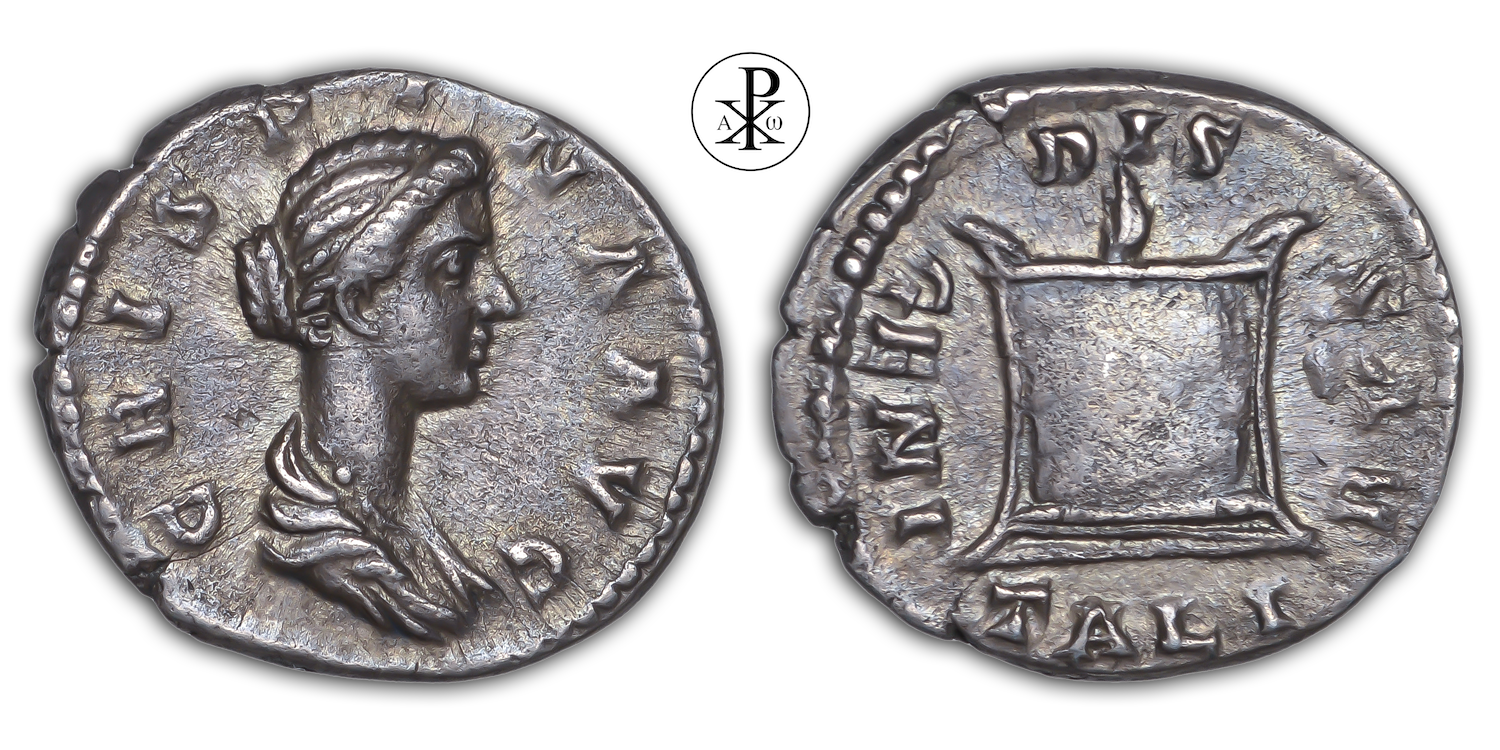Bruttia Crispina
Reign: Marcus Aurelius or Commodus
Mint: Rome
Date: 178/182 AD
Nominal: Denarius
Material: Silver
Diameter: 18mm
Weight: 2.79g
Reference: RIC III Commodus 281a
OCRE Online: http://numismatics.org/ocre/id/ric.3.com.281a
Rare: R1
Provenance: Noonans Numismatics London, Great Britain (Auction 21, Lot 505)
Pedigree: From the Graham Collection of Roman Imperial Coins (Bt Stanley Gibbons 1973)
Obverse: Bust of Crispina, draped, hair in round coil at back, right
Inscription: CRISPINA AVG
Translation: Crispina Augusta
Translation: [Bruttia] Crispina, the venerable
Reverse: Garlanded and lighted rectangular altar
Inscription: DIS GENITALIBVS
Translation: Dis Genitalibus
Translation: Fertility, belonging to procreation or belonging to birth
Comment: Bruttia Crispina, the daughter of C. Bruttius Praesens and Valeria Marcia Hostilia Crispina Moecia Cornelia, the sister of L. Bruttius Quintius Crispinus, was married by Emperor Marcus Aurelius to his son, the future Emperor Commodus, before he left for the Sarmatian campaign, from which he did not return (Cass. Dio LXXI 33, 1. Hist. Aug. Marc. 27, 8). She finds her death, after Commodus has come to the government, on Capri, where she was banished for adultery by her husband – probably around the year 182 AD. However, it is not likely that her banishment and her death falls before the consulate year of her brother (187 AD), whom then the emperor would not have honored with the consulate. Ultimately, the exact year of Crispina’s death remains hidden in the darkness of history – as well as the exact dating of her coins. One of the last coinages is probably from Alexandria with 181/182 AD as the year. Thus, the issues of the empress can be roughly narrowed down to the period 178-182 AD.
From this imperial denarius it would seem that the empress had dedicated an altar to the dii genitales (Gods of origin from which everything descends; life generating gods), either for having had children, or that she might obtain fertility from them, or that she might commend the child, with which she was pregnant, to their care and protection. Genitalis (says Eckhel, vii. 139), or in the neuter gender, genitale, is that which possesses, or imparts, the faculty of generating (Numiswiki). It is therefore very likely that this is an issue between 178 and the end of 181 AD at the latest – before the banishment to Capri. Whether this coinage was for the desire for a child or for the care of a pregnancy – can also not be clarified.
The coin was a part of the famous Graham Collection of Roman Imperial Coins (Tinchant, Paul [a.k.a. “Graham, Richard J.”]; Jacques Schulman N.V. The Richard J. Graham Collection of Ancient Greek, Roman and Byzantine Coins including a splendid series of Roman Bronze Medallions. Catalog of public auction [243], 8 June 1966. Amsterdam. 1966. [Clain-Stefanelli 3668 & 4978]).
